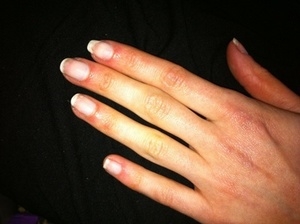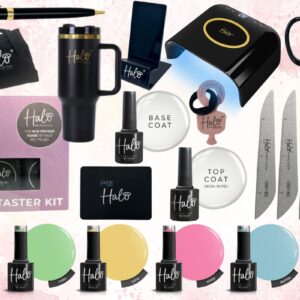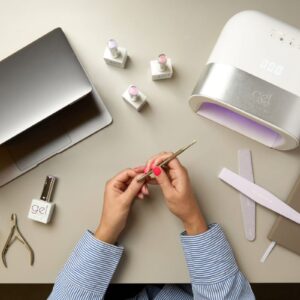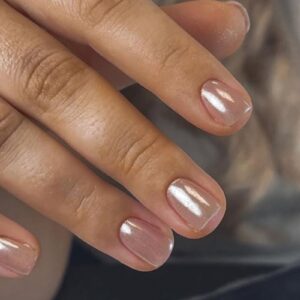
How to prevent nail product overexposure
By Katie Barnes | 29 August 2017 | Expert Advice, Feature, Technique
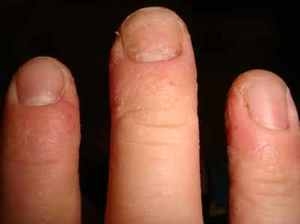
Salon owner, educator, former Scratch columnist and award-winning nail stylist, Katie Barnes, reveals why the misuse of monomer can have nasty consequences…
We are all responsible for bad work habits but some are more dangerous than others. It has become alarmingly more apparent through the likes of YouTube videos and live feeds on social media that too many techs are flooding cuticles and surrounding tissue with monomer, primers and other nail products.
As a professional nail technician, we work with chemicals all day. Everything we come in contact with is a chemical, except for light and electricity. These chemicals can become harmful if we overexpose ourselves or our clients in various ways.
While touching the skin with L&P, gel polish or gel will cause lifting, many techs sweep around this area to ‘clean up’ and fail to see the wider issue of causing potential allergies and skin irritation to their clients. Unfortunately, social media is saturated with videos of this, giving poor education and potentially dangerous habits to impressionable or new techs that feel they have to work in this way to create the same end result. Those who are looked up to and educate should be setting the standards, not causing the problems.
Many believe that the bigger the bead or brush, the less work and time needed but in fact this makes the product so much harder to control, as the bead will need to be too wet and will cure unevenly. If you use too much monomer then your mix ratio will be too wet. As well as this being likely to flood the skin and cuticle while revealing your client to overexposure, you can also create a weak nail structure.
When the monomers link to each other during the chain reaction, they knit to each other tightly, causing the nail enhancement to shrink. When you work with too much monomer, all of that extra monomer links together and you have excessive shrinkage of the enhancement, which in turn can make it prone to lifting and breaking. This is why every tech must understand one of the most basic yet important parts of product chemistry with L&P – the stages of curing. Work with more, controlled smaller beads to give yourself less filing and more control over the product. Learning to control your product and being fully knowledgeable about the product chemistry is absolutely essential to avoid this.
You may be working in this way and not experience any problems or concerns for six months, five years or even 20 but can you really call yourself a nail professional if you aren’t concerned about the potential hazards to yourself or your client? Would you be okay that sloppy working techniques ended in your client never being able to wear enhancements again?
How to protect yourself
As with most careers, those exposed to chemicals should wear personal protective equipment. Nail technicians should protect themselves from overexposure and dust irritation by wearing nitrile gloves, with many recommending doubling these up for better protection. Latex isn’t recommended because latex contains naturally occurring substances that causes skin allergies. If you cannot work with gloves, you can use a barrier cream or gloves in a bottle to help protect yourself.
It is also important to continually keep your working area tidy and clean throughout nail services by remove dust while working and avoid resting your arm or hand in tissue soaked in monomer – the dust will settle on this and cause further irritation and over exposure.
Now might be the time to look at all of your working practices and see if you have picked up any bad habits that could affect you or your clients and now is the time to change them. Ensure you are a nail professional in all senses by being fully educated in the product and chemistry and caring for your client and your own skin and nail health.
Top tips for avoiding overexposure:
- Never smooth L&P surfaces with more monomer.
- Never use monomer to clean up the edges, under the nail or sidewalls.
- Never overload your brush with monomer without removing the excess.
- Never touch the skin with monomer or any other nail products.
- Never touch the bristles of your brush with your fingers.
- Never use a wet bead, drain the excess monomer or wait before working with it.
From Katie B x

Read the latest issue



